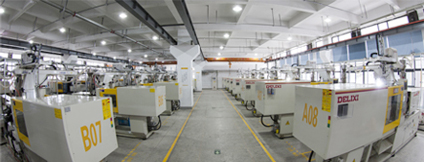Hangzhou Delixi Group Co.,Ltd.
Featured News
Frequency inverters are widely used throughout industry to provide adjustable speed control of ac motors. Although modern versions are relatively simple to install and operate, frequency inverters are quite complex, containing a myriad of advanced hardware and software. Frequency inverter implementation and operation can often be improved by understanding internal frequency inverter basic processes. To that end, we present the terminology used to describe frequency inverter internal operations and external interfaces. This lesson contains 40 of the most important frequency inverter terms for today's design engineers.
1. Rectifier/converter: One of the three primary sections of a frequency inverter's main power circuit, and first in terms of power flow. Incoming ac line voltage is rectified to dc voltage in the converter section, which consists of diodes, silicon-controlled rectifiers (SCRs), or insulated gate bipolar transistors (IGBTs) connected in a full-wave bridge configuration.
2. Dc bus: The second primary section of a frequency inverter's main power circuit, chiefly comprised of capacitors that store power rectified by the converter.
3. Inverter: The third and final primary section of a frequency inverter's main power circuit.
The inverter section is comprised of IGBTs that create sinusoidal output current using pulsed dc bus voltage, or pulse width modulation (PWM). Frequency inverters themselves are sometimes called inverters, as the presence of an inverter section is the primary difference between frequency inverters and dc converters.
4. IGBT: Very fast semiconductor switches that are actuated electronically.
By applying a small positive voltage between the gate and emitter points of the IGBT, current is allowed to flow from a collector point to an emitter point. IGBT switching rates in frequency inverters range from 2 to 15 kHz. (See carrier frequency.)
5. PWM: A frequency inverter control scheme in which a constant dc voltage is used to reconstruct a pseudo ac voltage waveform using a set of six power switches, usually IGBTs.
Varying the width of the fixed-amplitude pulses controls effective voltage. This pulse width modulation scheme works because the motor is a large inductor that does not allow current to pulse like the voltage.
This article comes from inverter edit released

The IoE Ushers in Opportunity for The Last Product Recall
In our consumer-centric society, product recall announcements grab headlines and...
 86 - 571 - 85221566
86 - 571 - 85221566
 Login/Register
Login/Register

